Speak to a Botswana expert today
and start planning your tailor-made holiday

Alistair
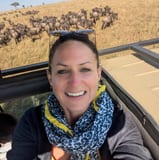

Can't decide where to go? Why not peruse some of our most popular destinations for inspiration then give us a call!

A diverse land brimming with superb safaris, pristine sandy beaches, towering snow-capped peaks and tropical underwater worlds is just waiting to welcome you

Australia offers vibrant cities, diverse landscapes, and iconic wonders like the Great Barrier Reef. New Zealand adds dramatic scenery, Maori culture, and relaxed charm. Together, they promise nature, adventure, culture, and warm hospitality.

If you're dreaming of an island getaway, look no further than the Caribbean with its gorgeous soft sand beaches and lively, diverse cultures.

Head to the amazing destination that is Central America, full of the knowledge of ancient civilizations, incredible mountains, and beautiful beaches.

Discover vibrant cultures, pristine beaches, and tantalizing flavours in the captivating travel haven that is East and Southeast Asia

Embark on a journey through the vibrant tapestry of India, Sri Lanka, and Bhutan—where ancient temples, lush tea plantations, and soaring Himalayan peaks promise unforgettable moments at every turn.

Picture yourself basking on sun-kissed beaches, sipping tropical cocktails beneath swaying palms —where crystal-clear lagoons and luxurious resorts cater to your every desire.

Experience world-class hospitality, mouthwatering cuisines, and the region’s deep-rooted cultural traditions for an unforgettable Middle East adventure.

Venture to the ends of the Earth and behold the icy majesty of polar landscapes. Discover pristine solitude, exhilarating expeditions, and breathtaking views that promise a memorable encounter with nature at its most dramatic

Journey into the heart of South America, where the rhythmic pulse of its vibrant cities meets the majesty of the Amazon rainforest and the timeless wonder of ancient civilizations.

The South Pacific is a paradise of turquoise waters, white-sand beaches, and vibrant island cultures. From adventure and natural beauty to pure relaxation, each island offers its own unique charm and welcome.

From the soaring plains of the Southwestern USA to the stunning landscapes of the expanses of Canada, visit some of the most impressive scenery in the world

If you are looking for a trip to knock iconic locations off your bucket list, check out our buck list recommendations

From the graceful stride of giraffes at sunrise to the echoing roars of lions beneath starlit skies, each of our safaris promises an unforgettable dance with nature.


Our family holidays are a perfect opportunity to create lasting memories, whether exploring new destinations or simply enjoying quality time together. From adventure-filled escapes to relaxing beach retreats, they offer a chance to reconnect and unwind away from daily routines.

Our luxury holidays offer the finest experiences, from exclusive resorts and private villas to tailor-made adventures with impeccable service.

For those seeking adventure beyond the usual tourist trails, our off-the-beaten-track trips take you to some of the world’s most remote and untouched destinations, where authentic cultural encounters and breathtaking landscapes await. Let us craft your unique journeys that few travellers ever experience.

For the ultimate beach escape, we offer luxury holidays to some of the world’s most stunning coastal destinations, from the white-sand shores of Antigua to the turquoise waters of Zanzibar.

For those who crave excitement and exploration, our adventure holidays take you to some of the world’s most thrilling destinations, whether trekking through Patagonia, summiting Mount Kenya, or kayaking past icebergs in Antarctica.

Interested in something a bit more focused? How about a horse-riding holiday through Argentina? Or a photography safari? Look through our Special Interest holiday selection for inspiration

Our wildlife holidays invite you to step into unique ecosystems and experience amazing animal encounters. Whether spotting majestic tigers in the jungles of India or marvelling at polar bears in the Arctic, each trip promises awe-inspiring moments steeped in the magic of nature.

Our small group tours offer the perfect balance of expert-guided exploration and personal experience, taking you to incredible destinations with like-minded travellers. Whether it's a wildlife safari in Botswana, a cultural journey through Vietnam, or a chef-led expedition through India, our carefully curated itineraries ensure an intimate, enriching, and hassle-free experience.

Sustainability travel is at the core of what we do and a guiding principle in every choice we make as a business. Let us help you make sustainable travel choices

Read about what we do to make a difference

One of the most important parts of our commitment to responsible travel is protecting our clients, and it is a part that we take extremely seriously.

Not sure what's best for which time of year? Check out our expert-written guides

Looking for some expertise on your destination? Have a look through our selection of guides and articles written by our destination experts

Looking for more inspiration? Read from our range of hundreds of articles from our travel specialists, local guides, and personal travel tales.

Our mission is to make every holiday special. We will do this whilst specifically aiming to minimise the environmental impact of our activity and maximise our opportunity to influence others to do the same.

Botswana is undoubtedly one of the most renowned safari destinations. With phenomenal wildlife, incredible vistas, great weather for the majority of the year and incredibly welcoming people it’s effortless to see why.
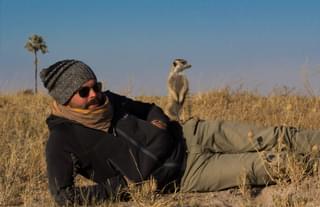
I have been lucky enough to live and travel throughout Africa and have been putting safaris together for 7 years. Every country has its own draws with elements making special in their own right. However, I am going to share a few incredible facts that you may not have known about Botswana before, and they may you help in deciding where you want to go and what you want to experience on your own Botswana safari.
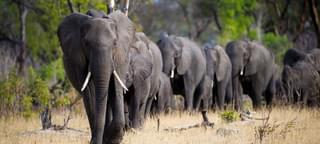
Botswana is the go-to destination for elephants. With numbers thought to be in excess of 140,000, it is home to roughly a third of Africa’s overall elephant population. Since a hunting ban was put in place in 2014, elephant numbers in Botswana have been gradually increasing and with conservation efforts gaining praise from preservationists around the world.
Although hunting has recently been reintroduced, it is still finding its place and Botswana continues to be an elephant population stronghold and almost a talisman for the rest of Africa to follow suit. The largest populations can be seen in Northern Botswana with mega herds seen throughout the Okavango Delta, Chobe National Park and the Kwando Linyanti areas. When deciding between camps for your trip you will be very unlucky to see large numbers of elephants at any of the Okavango Delta, Chobe or Linyanti camps.
However, some of my best encounters have been sitting on the decking of my tent at Kwando Linyanti Camp. Located in the huge, private Kwando Reserve between the banks of the Chobe and Okavango Rivers this area is home to thousands of elephants. On a recent 2 night stay, we were treated to leopard sightings, lion, the elusive brown hyena and to top it off the daily visit of mega herds of 300+ elephants drinking from the lagoon in front of our rooms on a daily basis.

One of the main reasons safari goers have such a big draw to Botswana is the experience of true wilderness it provides. Many people go on safari to get away from the crowds and experience nature in its truest form. Botswana provides this more than any other country in Africa. This does however result in many of the camps being unobtainable due to the cost of this exclusivity.
Botswana works on a high-cost, low-volume tourism model that allows exclusive wildlife experiences in extremely remote and game-rich areas. Unlike several other safari destinations, the remoteness of camps means many of them are only accessible by a small plane charter, although this increases the cost of the trip it certainly adds to the adventure.
Botswana understands the importance of conservation and the addition of travel and tourism brings to the economy, therefore much of the land mass is divided up into National Parks, game reserves, private concessions, and protected areas. The most famous are Moremi Game Reserve in the Okavango Delta, Chobe National Park and the Central Kalahari Game Reserve. Botswana has the ability to do this with relative ease and little conflict between humans and wildlife with the 7th lowest population density in the world.
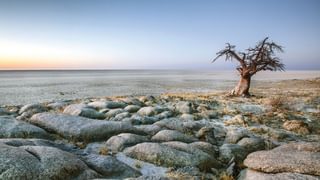
The Makgadikgadi Salt Pans are a place I hold very close to my heart. I spent nearly 3 years guiding here soaking up all the sights and sounds this incredible environment has and I had some of the best teachers possible, the Zu’hoasi bushmen who have made this area home for thousands of years. Covering an area of over 30,000 km2 the Makgadikgadi Salt Pans are the largest in the world surpassing the Bolivian Salar de Uyuni salt pan.
What makes the Makgadikgadi so special is its incredible species diversity. Unlike the Okavango Delta to the North, the Makgadikgadi doesn’t have the large numbers of plains game but it is home to the more elusive species such as aardwolf, brown hyena and meerkats. The open expanses of grassland blending into the flat saltpans provide little cover against a searching spotlight making night drives a must.
During the wetter months (December – March) the rains completely change the habitat. Lush grasses absorb the nutrients around the pans inviting Africa’s second largest Zebra migration to head west from the Boteti River and graze with predators such as cheetah and lion following. From a birder's point of view, these winter months are also a great time to see flamingos with both the greater and lesser flamingos migrate to the pans to feed, mate and lay their eggs.
There are 3 camps which are stand out choices for accommodation. Jacks Camp, San Camp and Camp Kalahari are run by the same operator and are perfectly located on the edge of the pans offering year-round access to the surrounding wildlife and most importantly offering the chance to access the salt pans when they are dry enough.
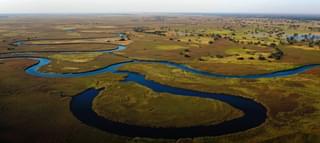
At over 15,000 km2 the Okavango Delta is the largest inland delta in the world and combined with the pristine untouched wildlife it is often referred to as the cloest thing to Eden on this planet. It may be due to its size that it is one of the most wildlife-rich parts of Africa with one of the highest densities of elephants and large carnivores on the continent, making it one of the must-visit areas for any Botswana safari.
Completely landlocked with the Caprivi Strip to the North, Nxai Pan and Chobe to the East and the Central Kalahari to the South the Okavango Deltas waterways bring life through the Kalahari Sands. 40% of the Delta system is the designated Moremi Game Reserve with the rest made up of over 20 private concessions.
Mombo Camp is at the top of the list for any itinerary, although it does command a well-deserved high price tag. This is one of the initial areas where white and black rhinos were reintroduced and is now a real stronghold for both species. Its location on the northern edge of Chiefs Island surrounded by floodplains and permanent water provides the perfect habitat for a large diversity of species. In its remote location away from human interaction in the heart of the Okavango numbers have been able to thrive providing incredible game viewing throughout the year. With frequent sightings of lions, cheetah, leopards, wild dogs and hyenas it’s a real predator hotspot. The best time to visit the Okavango delta is between May and October.
The rains fall from November to March resulting in lush green bush, tall grasses and plenty of surface water causing the game to disperse meaning sighting can be tougher. However, don’t be deterred, the game is still there but it just takes a little longer to find and the scenery is spectacular. From May onwards the surface water retreats into the sands, the grasses soon die back and the bush opens up. During these winter months the game just gets better and better, although remember, this is a remote and wild pace so plenty of luck is still involved.

Few people know that Botswana is home to the world’s shortest border. The border between Botswana and Zambia is only 700m long making wonders such as the Victoria Falls accessible by a short drive through immigration from the gates of Chobe National Park.
Travellers with more time on their hands can make the most of Botswana’s numerous different wildlife hotspots as part of a larger overland self-drive trip to explore other bordering countries such as Namibia, Zimbabwe, South Africa and Zambia.
The beauty of Botswana is that every trip to this magical destination is incredible and unforgettable for each and every minute of each and every day. But knowing the right places to go at the right times can really help you make the most out of your time away. Call or make an online enquiry to speak to one of our experts about your travel plans.
Wondering when you visit Botswana? Take a look at our guide on the best time to visit Botswana.
Looking for some more inspiration? Take a look at our best safari holidays ideas, our favourite family safaris, our big five safari guide or our top African safari honeymoon suggestions.
Call us today on 01768 603 715 to find out more or enquire here.
and start planning your tailor-made holiday


What can I say….my son and myself had the most wonderful time in Kenya thanks to the first-class itinerary that Ben and Louise put together for us. We spoke with Ben many times to ensure he ‘got it right’. This was our 2nd visit to Kenya, and it certainly lived up to our expectations and memories. Nothing was too much trouble for all the staff; we cannot have been looked after any better. I would highly recommend Far and Wild; they are so knowledgeable and have personally visited the lodges and areas. We are already planning another visit, and we cannot wait.
I have just returned from the most amazing trip to Tanzania, booked with Far & Wild. Everything went so smoothly from the first time I spoke with them. The planning was great, the itinerary was perfect for us, and the lodges were amazing. We spent 10 nights with an amazing guide, travelling through Northern Tanzania and even got to see the migration, which was a lifetime ambition of mine. This wasn't our first safari, so we were nervous as to how it would compare, but it was spot on. I will certainly be using them again to book our next trip....we're thinking of a relaxing beach stay next time to get over the excitement of safari!
Just back from another amazing F&W organised trip to Namibia with the family (8 adults). Having been there before, Alistair tailored our trip to include our favourite locations and added a new one for us, which we loved.The quality of accommodation and guiding, activities, food and drinks was exceptional throughout. It was good value for the level of luxury we had.
We had a wonderful trip to São Tomé and Príncipe - a small island nation in the Gulf of Guinea with paradise (almost empty) beaches and jungle forest. It was all well organised by Far and Wild and we stayed at a great combination of different types of resorts/hotels. We really recommend this for those who want to experience a pristine destination with few other tourists and friendly and welcoming people. The islands also feel very safe. At Principe, there are no dangerous animals, snakes or whatever, and it was great to be able to hike in the jungle without being very conscious of where to put your hands and feet. Go before everyone else does!
Back home again, basking in the joys of a superb safari. Every aspect you arranged for us, including linking up with Mack Air and Wild Horizons locally to transport us. The choice of camps was ideally situated, comfortable, in good surroundings, and with excellent wildlife on the doorstep and throughout the wider country. The service staff in each looked after us very well, catering was excellent, and the game guides were professional, knowledgeable and helpful. You made us happy, and we recommend you to similar safari enthusiasts with confidence.
Far and Wild went above and beyond to make sure my trip to Zambia was special. I would definitely recommend them and their services to anyone wanting to travel to Africa.
Lovely holiday at the amazing Almanara on Galu beach, a beach like no other. Far and Wild excelled themselves from beginning to end of our holiday in beautiful Kenya.... What a country!,
Wow! These guys are amazing. Can’t recommend them highly enough. Friendly AND efficient! Sorted out our trip (last minute and lots of different family member needs, sorry!) in record time and everything worked like clockwork. Trip of a lifetime to the Masai Mara. Will be back (and use F&W again!)!
It was a dreamy holiday on the Kenyan Coast - Far and Wild, their efficiency and professionalism allowed us to relax and be the happiest family alive !! We cannot fault them, their care and understanding of what we wanted from a holiday ensured we had the most memorable trip. We will be booking with them again for sure!
Get travel tips directly to your inbox every week
Give us a call on 0203 111 1315 or fill in the form below and we’ll be in touch.
